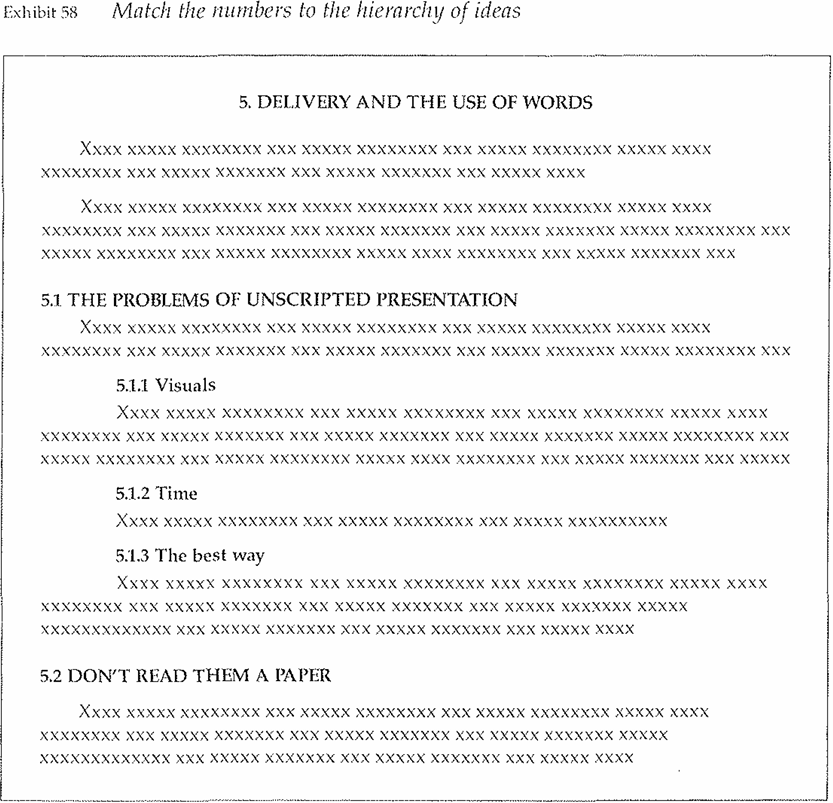
Decimal Numbering
 المؤلف:
BARBARA MINTO
المؤلف:
BARBARA MINTO
 المصدر:
THE MINTO PYRAMID PRINCIPLE
المصدر:
THE MINTO PYRAMID PRINCIPLE
 الجزء والصفحة:
177-10
الجزء والصفحة:
177-10
 2024-09-28
2024-09-28
 714
714
Decimal Numbering
Many companies, and most government institutions, like to use numbers rather than headings to emphasize the subdivisions of a document, and some go so far as to number every paragraph. This approach is claimed to have the advantage that any single topic or recommendation can be easily and precisely referred to.
However, frequent index numbers do tend to interrupt the reader's concentration on the content of the document, or on any section of it, as a whole. In addition, they have a distinct practical disadvantage, in that any amendment to the finished copy that eliminates a paragraph or so could necessitate the renumbering of all subsequent paragraphs. A nuisance, even with word processing.
If you decide that you prefer to have numbering because of its value as a quick guide, you would be wiser to use it in conjunction with, rather than as a replacement for hierarchical headings. The headings have the value of enabling the reader to pick up the gist of the ideas quickly as he reads. And they are quite useful in refreshing his memory if he finds he has to go back to the document several days after his initial reading.
In addition, you will usually find that saying, "In manufacturing profits..." is clearer as a reference locater than is saying only, In the former case, the person has the general idea in mind as he turns to the specific reference; in the latter, he must get to it before he can begin to think about it.
The excerpt shown in Exhibit 58, of Antony Jay's fine book, Effective Presentation, illustrates the way you want your document to end up looking if you use the headings/number form.

What numbering system should you use? This one is very common:
1. There is no other animal that will suffer to the death to aid its master as will a dog.
1.1 Other animals will run when danger nears
1.1.1 The dog will remain
1.1.1.1 Even though it might mean death
This one is probably simpler to use
1. There is no other animal that will suffer to the death to aid its master as will a dog.
1. Other animals will run when danger nears
a. The dog will remain
i. Even though it might mean death
Any numbering system should reflect the actual divisions of thought in the piece of writing. Accordingly, you would not number the paragraphs in initial introductions, in concluding summaries, in linking comments, or in the introduction to subpoints.
 الاكثر قراءة في Writing
الاكثر قراءة في Writing
 اخر الاخبار
اخر الاخبار
اخبار العتبة العباسية المقدسة


